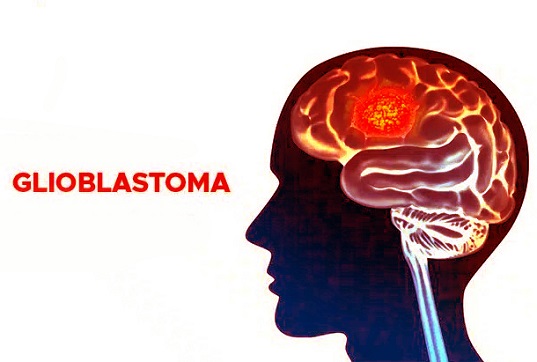Nikhil Prasad Fact checked by:Thailand Medical News Team Dec 22, 2024 4 months, 4 days, 3 hours, 13 minutes ago
Medical News: Glioblastoma, one of the most aggressive brain cancers, continues to pose a significant challenge due to its complex nature and poor survival rates. Researchers from the University of Málaga in Spain and the University of Texas Southwestern Medical Center in the USA have made strides in understanding its metabolic behavior. The study, which focused on how the enzyme glutaminase 2 (GLS2) alters glioblastoma metabolism, provides crucial insights into potential therapeutic pathways. This
Medical News report covers details of the study findings and provides novel insights into Glioblastoma.
 Metabolic Changes in Glioblastoma and the Role of Glutaminase 2
Metabolic Changes in Glioblastoma and the Role of Glutaminase 2
Cancer cells are known to rewire their metabolism to sustain rapid growth and survival. This phenomenon, termed metabolic reprogramming, highlights glutamine’s role as a primary nutrient fueling various metabolic pathways. Glutaminase enzymes, GLS and GLS2, regulate the conversion of glutamine to glutamate - a vital step for energy production and biosynthesis. However, these enzymes’ roles vary significantly between healthy and cancerous cells.
What This Study Explores
Glioblastoma cells predominantly express GLS while often lacking GLS2. The researchers set out to determine whether reintroducing GLS2 into glioblastoma cells could alter their metabolism and suppress tumor growth. Using LN-229 glioblastoma cells, the team developed models with varying levels of GLS2 expression. They analyzed the cells’ metabolic changes through advanced metabolomic techniques and isotope tracing with labeled glutamine.
Key Study Findings
-Slower Proliferation and Increased Drug Resistance
GLS2 expression significantly slowed the proliferation of glioblastoma cells. Doubling times increased by up to 34.6% in cells expressing high GLS2 levels. Interestingly, cells with high GLS2 expression became resistant to CB-839, a drug designed to inhibit GLS. While CB-839 nearly doubled the doubling time in control cells, its impact on GLS2-expressing cells was minimal.
-Changes in the TCA Cycle
The tricarboxylic acid (TCA) cycle, a central metabolic pathway, showed notable alterations with GLS2 expression. GLS2 increased the levels of intermediates like succinate, fumarate, and malate - metabolites produced through oxidative metabolism. However, it reduced the levels of citrate and its derivatives, cis-aconitate and isocitrate, by over 80%. This disruption suggested that GLS2 might selectively modulate specific steps within the TCA cycle.
Unique Role in Nucleotide Synthesis
The study revealed that GLS2 affects nucleotide metabolism. AMP levels increased in GLS2-expressing cells, while GMP and UMP levels dropped. This imbalance could influence DNA and RNA synthesis, potentially impacting cell proliferation and survival.
Impact on Pyruvate Dehydrogenase (PDH) Activity
A particularly intriguing finding was
GLS2’s effect on pyruvate dehydrogenase (PDH), an enzyme linking glycolysis to the TCA cycle. GLS2 overexpression reduced PDH activity by over 50%, likely due to increased phosphorylation of a key PDH subunit. This modulation limited the flow of glycolytic products into mitochondrial metabolism, potentially curbing cancer cell growth.
Increased Methylation Potential
GLS2-expressing cells exhibited higher levels of S-adenosyl methionine (SAM), a universal methyl donor. Elevated SAM levels could enhance DNA and protein methylation, impacting epigenetic regulation. Additionally, methylated metabolites like 3-methyladenine and trimethyl-lysine accumulated, suggesting broad effects on cellular methylation processes.
Implications for Cancer Treatment
The findings indicate that GLS2 has a dual role. On one hand, it slows cell proliferation and reduces reliance on GLS, providing a potential mechanism for tumor suppression. On the other hand, its impact on metabolic pathways like the TCA cycle and nucleotide biosynthesis could create vulnerabilities that targeted therapies might exploit.
Notably, GLS2’s ability to regulate PDH activity and influence mitochondrial metabolism sets it apart from GLS. While GLS inhibitors like CB-839 have shown promise, the resistance observed in GLS2-expressing cells highlights the need for alternative strategies. Future therapies could focus on combining GLS inhibitors with treatments targeting GLS2-specific pathways.
Conclusions
This study sheds light on the intricate interplay between metabolism and cancer progression in glioblastoma. GLS2 emerges as a pivotal regulator, influencing key metabolic pathways and cell proliferation. By altering the balance of oxidative and reductive metabolism, nucleotide synthesis, and methylation potential, GLS2 could serve as both a therapeutic target and a biomarker for glioblastoma.
Further research is essential to uncover the mechanisms underlying GLS2’s effects and to determine whether these findings extend to other cancer types. The ultimate goal is to harness these insights for developing innovative treatments that improve outcomes for glioblastoma patients.
The study findings were published on a preprint server and are currently being peer reviewed.
https://www.preprints.org/manuscript/202412.1453/v1
For the latest on Glioblastoma, keep on logging to Thailand
Medical News.
Read Also:
https://www.thailandmedical.news/news/repurposed-cancer-drugs-offer-hope-for-glioblastoma-treatment
https://www.thailandmedical.news/news/understanding-the-role-of-podoplanin-in-glioblastoma-progression
https://www.thailandmedical.news/news/progenitor-cells-and-microglia-shape-glioblastoma-s-deadly-path
https://www.thailandmedical.news/news/hdac6-as-a-target-for-glioblastoma-multiforme-therapy
https://www.thailandmedical.news/news/unlocking-the-potential-of-liquid-biopsies-in-glioblastoma-diagnosis-and-treatment
https://www.thailandmedical.news/news/amino-acid-deprivation-as-a-new-hope-in-glioblastoma-treatment
https://www.thailandmedical.news/news/glioblastoma-may-weaken-key-immune-cells
https://www.thailandmedical.news/news/napabucasin-shows-promise-for-glioblastoma
https://www.thailandmedical.news/news/natural-compounds-show-promise-as-adjuvants-for-glioblastoma
https://www.thailandmedical.news/news/new-hope-for-glioblastoma-treatment-orladeyo-shows-promise-in-reducing-cerebral-edema
https://www.thailandmedical.news/news/a-new-promising-treatment-protocol-for-aggressive-type-of-malignant-brain-tumor
https://www.thailandmedical.news/news/university-of-mississippi-study-shows-that-juice-of-the-cornelian-cherry-can-help-with-glioblastoma
https://www.thailandmedical.news/news/metformin-shows-potential-as-an-angiogenic-supplemental-adjuvant-for-glioblastoma-treatment
https://www.thailandmedical.news/news/overcoming-drug-resistance-in-glioblastoma-the-promise-of-pi3k-beta-inhibitors
https://www.thailandmedical.news/news/herbs-and-phytochemicals-bioactive-compounds-from-kiwiberry-found-to-be-useful-in-treating-glioblastoma
https://www.thailandmedical.news/news/breaking-texas-md-anderson-study-finds-that-covid-19-accelerates-brain-tumor-progression-and-possibly-causes-new-onset-glioblastomas
https://www.thailandmedical.news/news/breaking-covid-19-news-study-finds-that-covid-19-hospitalization-linked-to-elevated-glioblastoma-risk-a-type-of-aggressive-brain-cancer
